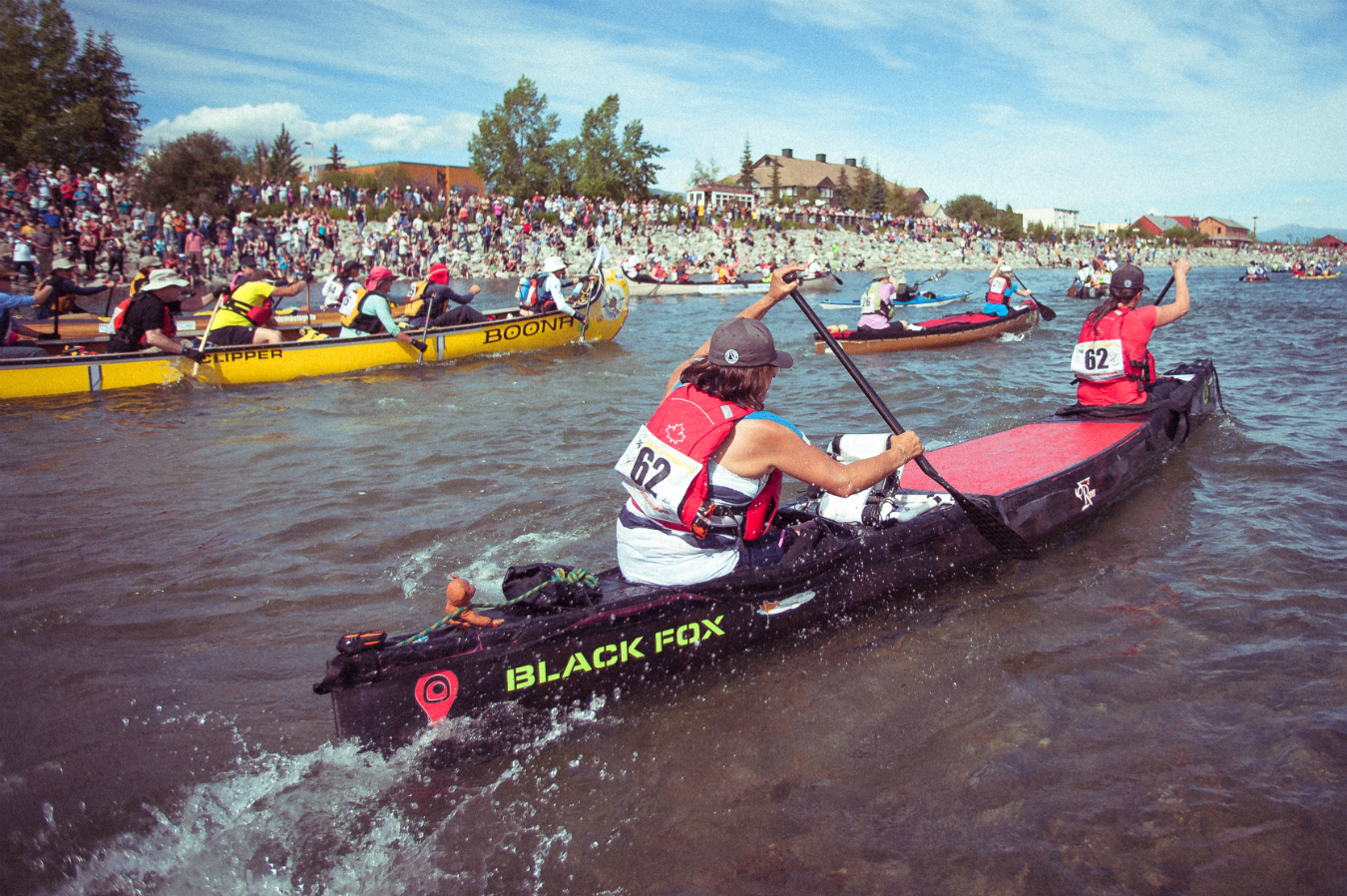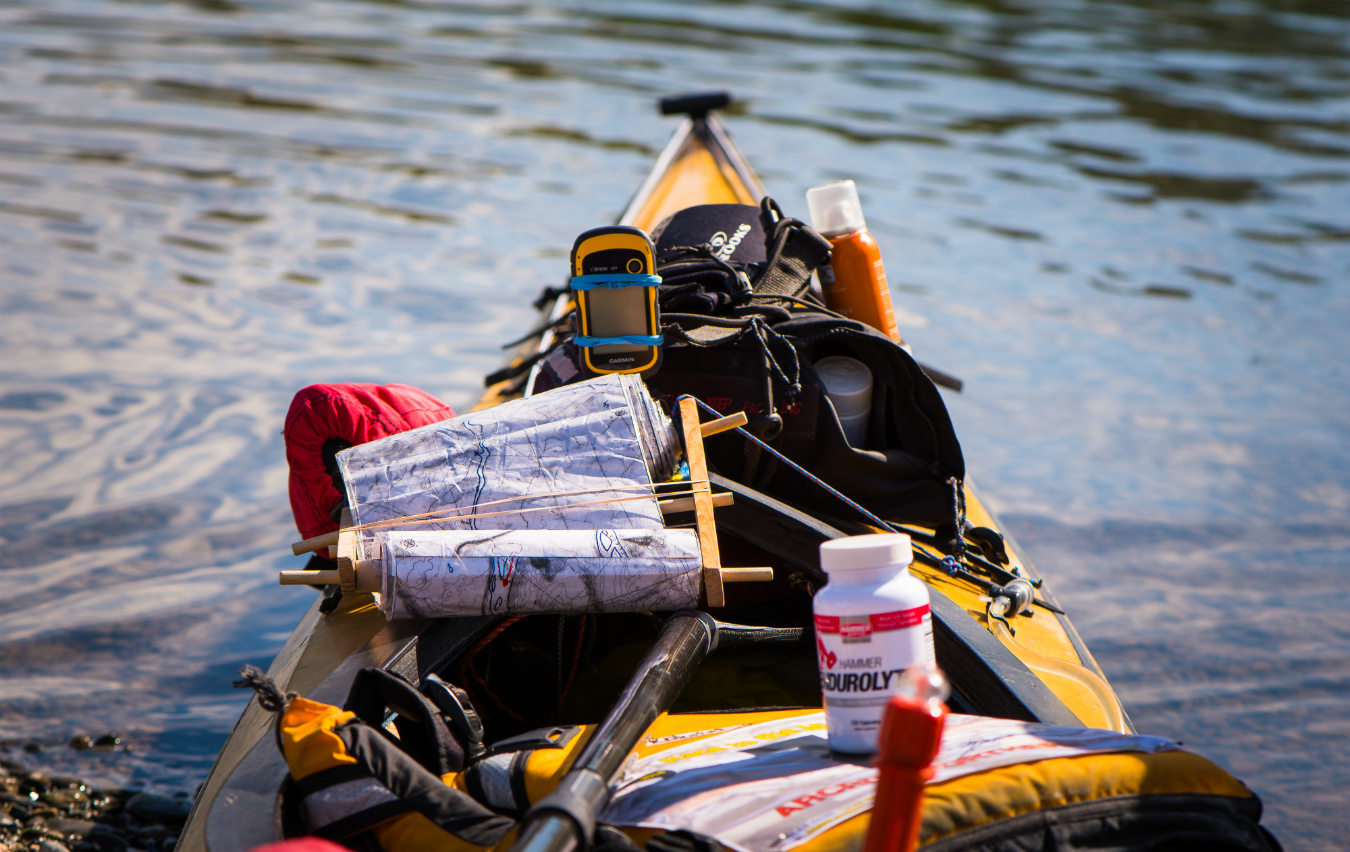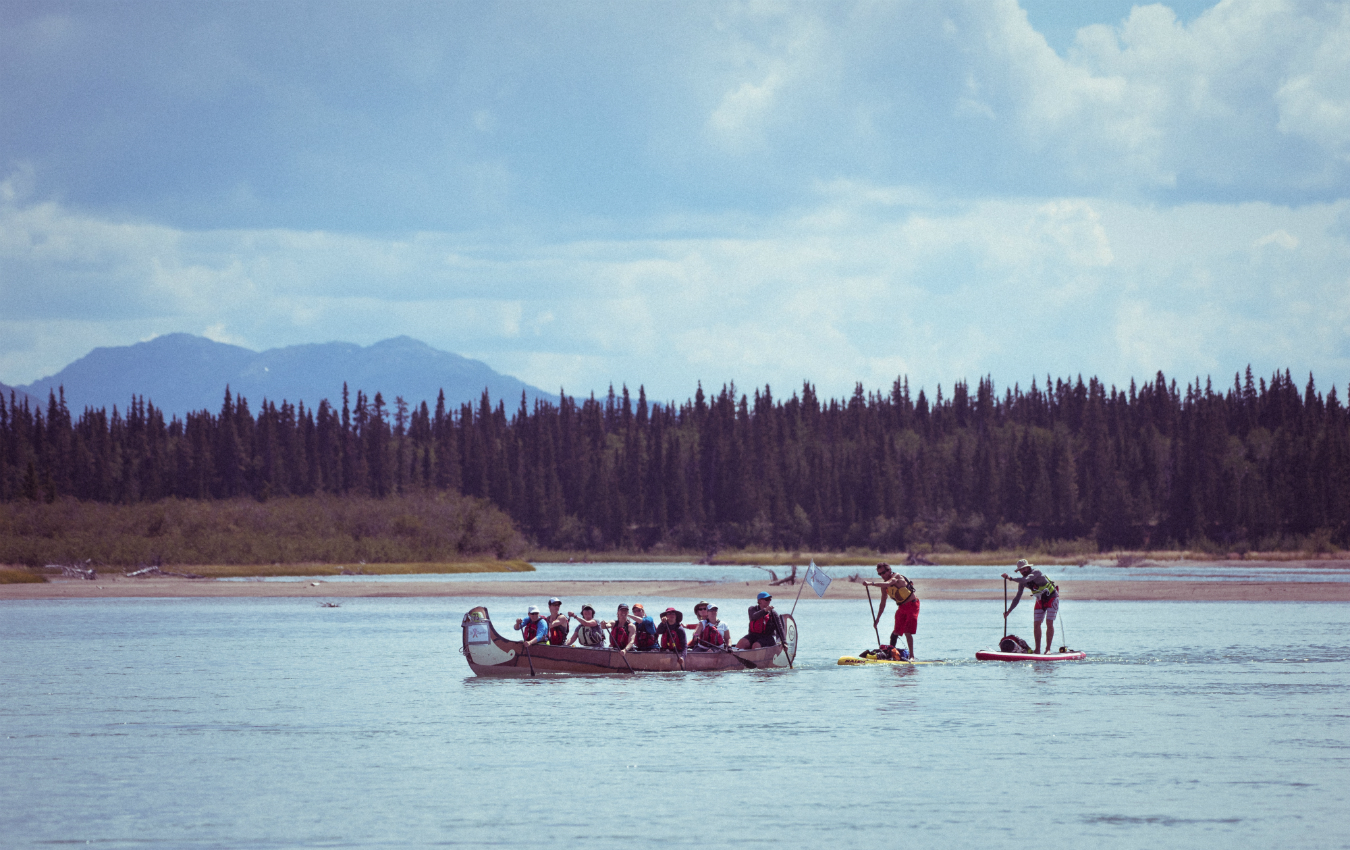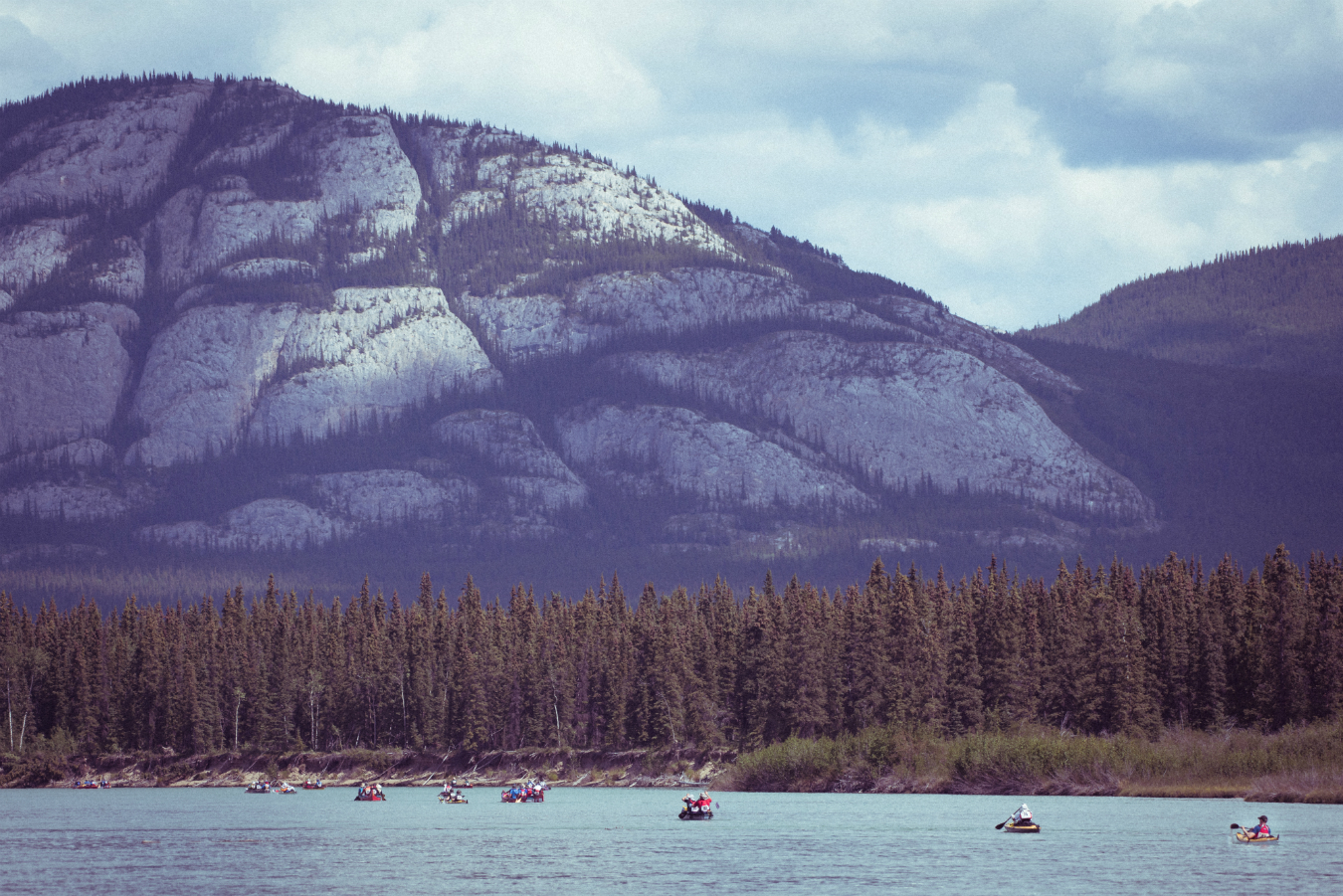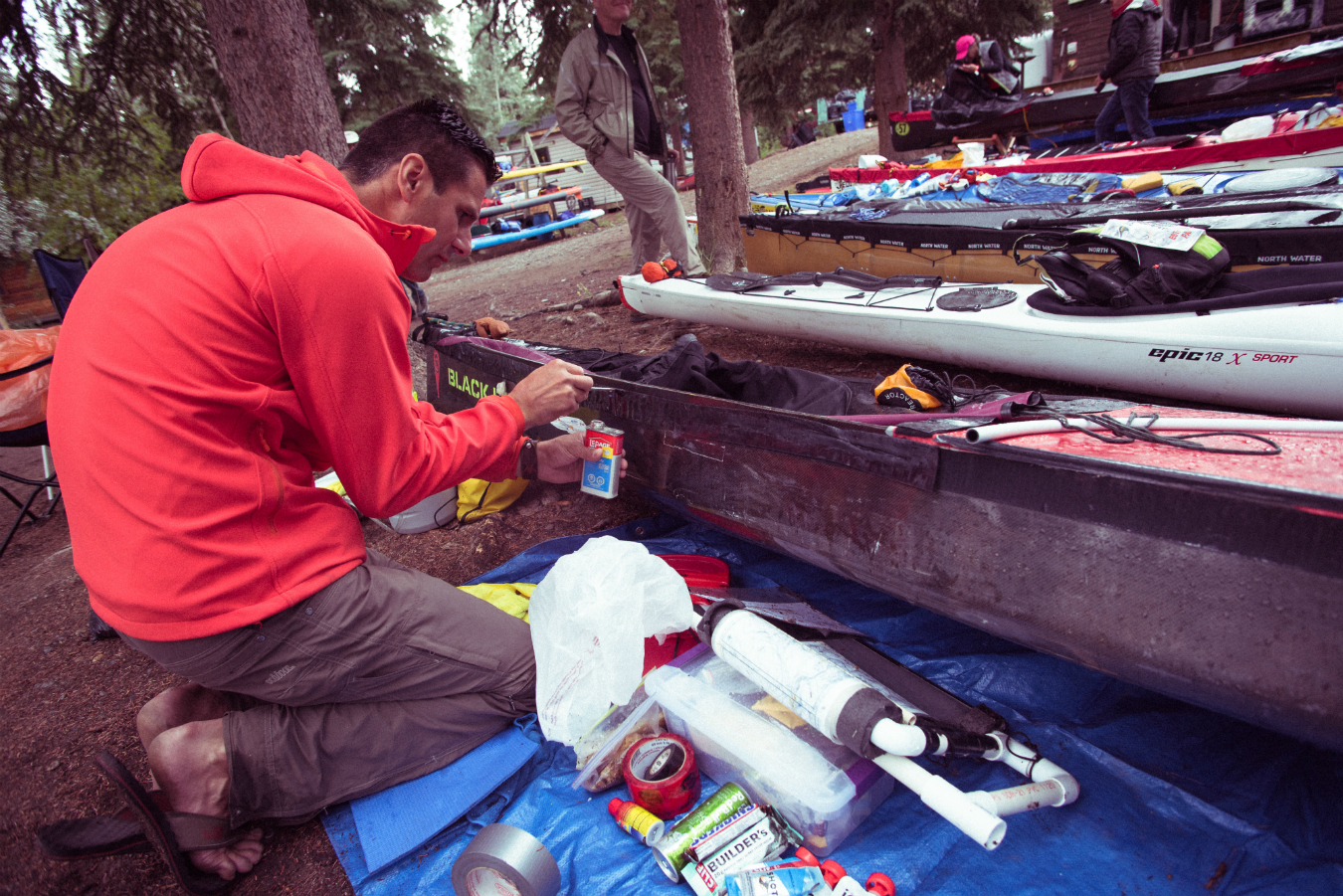Made famous by its central role in the Klondike gold rush, the Yukon River has loomed large for adventure-seekers for well over a century. With its source at the foot of the Llewellyn Glacier near Atlin, British Columbia, the river runs north and west over a staggering 3,190 kilometres before emptying into the Bering Sea in western Alaska. Paddlers looking to re-trace history on the river, or test themselves in the wilderness of the Yukon, have made the water a global destination for decades.
Since being established by a core group of adrenaline-seeking canoeists in 1999, the Yukon River Quest has stood as one of the most physically and mentally challenging feats one could undertake on the river. Covering “just” the 715-kilometre section from Whitehorse to Dawson City, this race traditionally kicks off with a LeMans-style running sprint to the boats, followed by frantic jockeying for position in front of cheering crowds lining the water.
Three hours later, that initial tight pack stretches out dramatically, and the quickest teams begin the 50-kilometre crossing of fickle Lake Laberge just north of Whitehorse, where waves have been known to capsize boats and force the first “scratches” from the race. From that point, to successfully reach the finish line in Dawson, the contest typically demands yet another 50 to 70 hours from participants. Tales from Quest veterans include not only the expected blisters, bruises, and numb nether regions, but also late-night hallucinations and close encounters with startled wildlife. Exhaustion, confusion, and rubber legs mean paddlers often need help exiting their boats at the mandatory rest stops at Carmacks and Coffee Creek, as the scratch list only grows.
In its first year, just 12 of 16 teams made it to the finish line in Dawson. Subsequent years have seen kayaks added to the mix, and a steady increase in the number of paddlers both overall and from international cities. The 2016 River Quest drew more than 200 athletes across solo and tandem kayaks and canoes, as well as six-person voyageur-style canoe teams. This year also marked the official addition of stand-up paddleboards (SUPs) to the mix for the first time, as an experimental class.
While the appearance of SUPs in the race raised many eyebrows, nine of the 11 entries successfully reached Dawson. Their ranks included international champions, who will undoubtedly draw more attention to the Quest, as its legend continues to grow.
Wanderlust? Keep reading.

